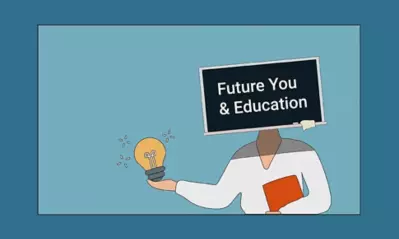Elementary vs. secondary education: What’s the difference and how that can impact your career

Written by Michael Feder

Reviewed by Pamela M. Roggeman, EdD, Dean, College of Education
The education field offers a variety of opportunities. Some people are interested in teaching young children, while others want to work with teenagers or adults. Some people are interested in behind-the-scenes jobs such as curriculum design, while others want to be in education leadership.
With so many options, it can be challenging to choose the right role. A good place to start is by asking, Which grade level do I want to teach?
Elementary school teachers work with children in elementary schools. Secondary school teachers work with teenagers, often in high schools, and specialize in subjects such as art, math or history. By understanding the differences between these two educator roles, aspiring teachers can make the choice that best fits their skills, temperament and goals.
Understanding the student age difference between elementary and secondary education
The most significant difference between elementary and secondary education concerns the ages of the students, and it’s a difference that can impact the teacher’s experience in the classroom.
For example, a first grade student has different emotional needs, intellectual capabilities and social experiences than an 11th grade student. Prospective teachers must understand these differences, how they’d translate to the classroom and how, as teachers, they could excel (or not) in each environment.
Elementary and secondary teachers also have varying daily schedules, duties, responsibilities and areas of expertise. It’s important to understand the opportunities and challenges that working with these age groups presents before choosing one level or the other.
Roles and responsibilities for teachers in elementary education
While the exact ages for students may vary slightly from state to state, elementary education typically covers students from kindergarten through sixth grade (depending on the state) or 5 years old through 12 years of age. Students in elementary school are new to the education system, relatively speaking, and may enter their school with a wide range of preparedness based on their preschool experience.
Teachers for this age group instruct almost every subject the children learn, including math, reading, writing, science and social studies. Students do not typically change classrooms during the day, except for lunch, recess and special classes such as art, music and physical education.
Elementary education instructs students in basic literacy, arithmetic and science while laying a general foundation for later education. To adequately perform their jobs, teachers in elementary education need in-depth knowledge of child development and social and emotional learning, as well as best practices for teaching pre-adolescent children.
Teachers in elementary education also tend to have more involvement and communication with students’ parents than teachers in secondary education. This is important for prospective teachers who prefer collaborating with adults for student success rather than teenagers.
Roles and responsibilities for teachers in secondary education
Secondary education generally encompasses students from sixth grade (11 years old) to 12th grade (18 years old). Students, in other words, attend secondary school until they reach the age of adulthood.
Teachers in secondary education tend to specialize in a specific subject, such as English, math, science, social studies, physical education or the arts.
Because students change classrooms with each class period, teachers generally teach classes within their subject to different groups of students at different grade levels each day. Parents may not be as involved as they were in elementary school, so teachers must be comfortable empowering students to take charge of their education.
Teacher education level requirements
Education requirements for teachers can depend on whether they work in elementary or secondary classrooms.
Elementary school teachers must earn a Bachelor of Science in Education or a related degree, while secondary school teachers
might earn a bachelor’s degree in their chosen subject or a bachelor’s degree in education with a specialization in their chosen subject.
After students finish their degree, states often require them to pass a series of exams determined by each state’s department of education in order to earn a teaching license. However, in some cases, student teachers don’t always need to pass exams to begin teaching. Some teachers may also work toward becoming nationally certified
as a means of strengthening their teaching practice and gaining useful skills like leadership.
Continuing education and career advancement
After gaining classroom experience, teachers may wish to earn their master’s degree in education. Taking graduate courses can fulfill continuing education requirements set forth by a school district, and earning a master’s degree may empower teachers to move into leadership or administrative roles down the road.
How do you know if a graduate degree is right for you? Consider creating a teaching philosophy statement . This will help you understand your beliefs as they relate to teaching, and it can help clarify whether your teaching style is better suited for careers at the bachelor’s or master’s level.
Salary and job outlook
As of May 2023, elementary school teachers earned between $46,960 and $104,440 annually, with a median wage of $63,680, according to BLS.
The job outlook for kindergarten and elementary school teachers is projected to show little or no change from 2022 to 2032.
As of May 2023, secondary school teachers earned between $48,040 and $106,380 annually, with a median wage of $65,220, according to BLS.
The job outlook for high school teachers is projected to show little or no change from 2022 to 2032.
A teacher’s salary depends on their level of education, years of experience and location . With the right experience and education, teachers may apply for higher-paying jobs in the field, such as positions in highly sought school districts and private schools, as well as teaching college-level courses or working in leadership for the school or school district.
Salary ranges are not specific to students or graduates of University of Phoenix. Actual outcomes vary based on multiple factors, including prior work experience, geographic location and other factors specific to the individual. University of Phoenix does not guarantee employment, salary level or career advancement. BLS data is geographically based. Information for a specific state/city can be researched on the BLS website.
Earn a degree in education at University of Phoenix
Whether you are taking the first step in your journey toward a career in education or looking to expand your existing knowledge and skill set, University of Phoenix offers a variety of degree and certificate options. These include:
- Bachelor of Science in Education/Early Childhood Education
: This program teaches curriculum planning, instructional practice, student engagement and many other valuable educational skills.
- Bachelor of Science in Education/Elementary Education
: If you're eager to learn skills geared toward teaching at the elementary school level, this elementary education degree online will help build your teaching and leadership skills, learning strategies and more.
- Graduate Initial Teacher Certificate/Elementary
: This certificate is intended for students with no teaching experience. It builds education knowledge and a skill set for those interested in teaching at the elementary level.
- Graduate Initial Teacher Certificate/Secondary
: This certificate is intended for students with no teaching experience. It builds education knowledge and a skill set for those interested in teaching at the secondary level.
Learn more about online education degrees and certificates through University of Phoenix.

ABOUT THE AUTHOR
A graduate of Johns Hopkins University and its Writing Seminars program and winner of the Stephen A. Dixon Literary Prize, Michael Feder brings an eye for detail and a passion for research to every article he writes. His academic and professional background includes experience in marketing, content development, script writing and SEO. Today, he works as a multimedia specialist at University of Phoenix where he covers a variety of topics ranging from healthcare to IT.

ABOUT THE REVIEWER
As dean of the University of Phoenix College of Education, Pamela Roggeman has spent over a decade in higher education teacher preparation in both the public and private sector. Her experience has included national partnerships that help to advance thought leadership in the field of education. Dr. Roggeman also serves as the President of the Arizona Educational Foundation’s Board of Directors.
This article has been vetted by University of Phoenix's editorial advisory committee.
Read more about our editorial process.
want to read more like this?



